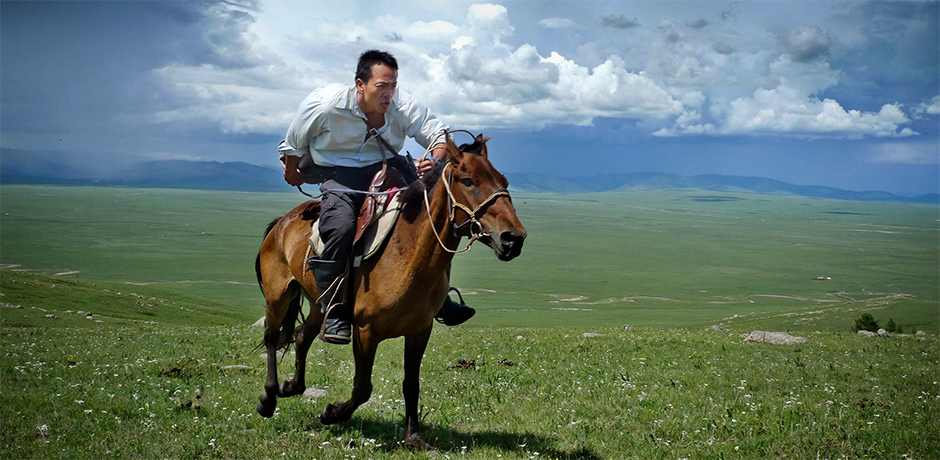News Release

UCSD researcher Albert Lin rides on the Mongolian steppe during expedition to survey potential sites of Genghis Khan’s tomb, enabled by crowdsourced analysis of satellite imagery.
December 10, 2009
National Geographic Adventure Magazine Labels Calit2 Researcher among Top 10 Adventurers of the Year
It’s not often that a materials scientist by training gets to be labeled one of the world’s top adventurers. But that’s the honor bestowed on Calit2 research scholar Albert Yu-Min Lin, 28, in the December 2009-January 2010 issue of National Geographic Adventure magazine. Lin is affiliated with Calit2’s Center of Interdisciplinary Science for Art, Architecture and Archaeology (CISA3). Lin launched the “Valley of the Khans” project, initially using satellite maps supplied by the GeoEye Foundation to search for tell-tale signs of Genghis Khan’s resting place. Then, with a grant from the National Geographic/Waitt Family Foundation program, Lin undertook an expedition in summer 2009 to Mongolia to deploy an unmanned aerial vehicle (UAV) to help identify any man-made anomalies. Along with National Geographic Resident Archaeologist, Fredrick Hiebert, Lin and his team of engineers, geologists, historians and archaeologists, set out to assist Mongolia's top scholars from the Mongolian Academy of Science with technologies that might enable them to steward the protection of the collective cultural heritage. “Archaeology has always depended on digging in the dirt to confirm a discovery and to retrieve remnants of our past,” says Lin. “CISA3 and the Valley of the Khans project see an alternative, because multispectral scanning, ground-penetrating radar, satellite and other noninvasive imaging tools have become so portable and powerful that we should be able to pinpoint underground structures and even bones and other relics. We don’t need a shovel to identify a burial site, especially one the size of what we believe would have surrounded Genghis Khan’s grave. This is new technology that will allow us to preserve the past while also giving the world images that eliminate the need to dig up ruins to preserve cultural heritage.”
